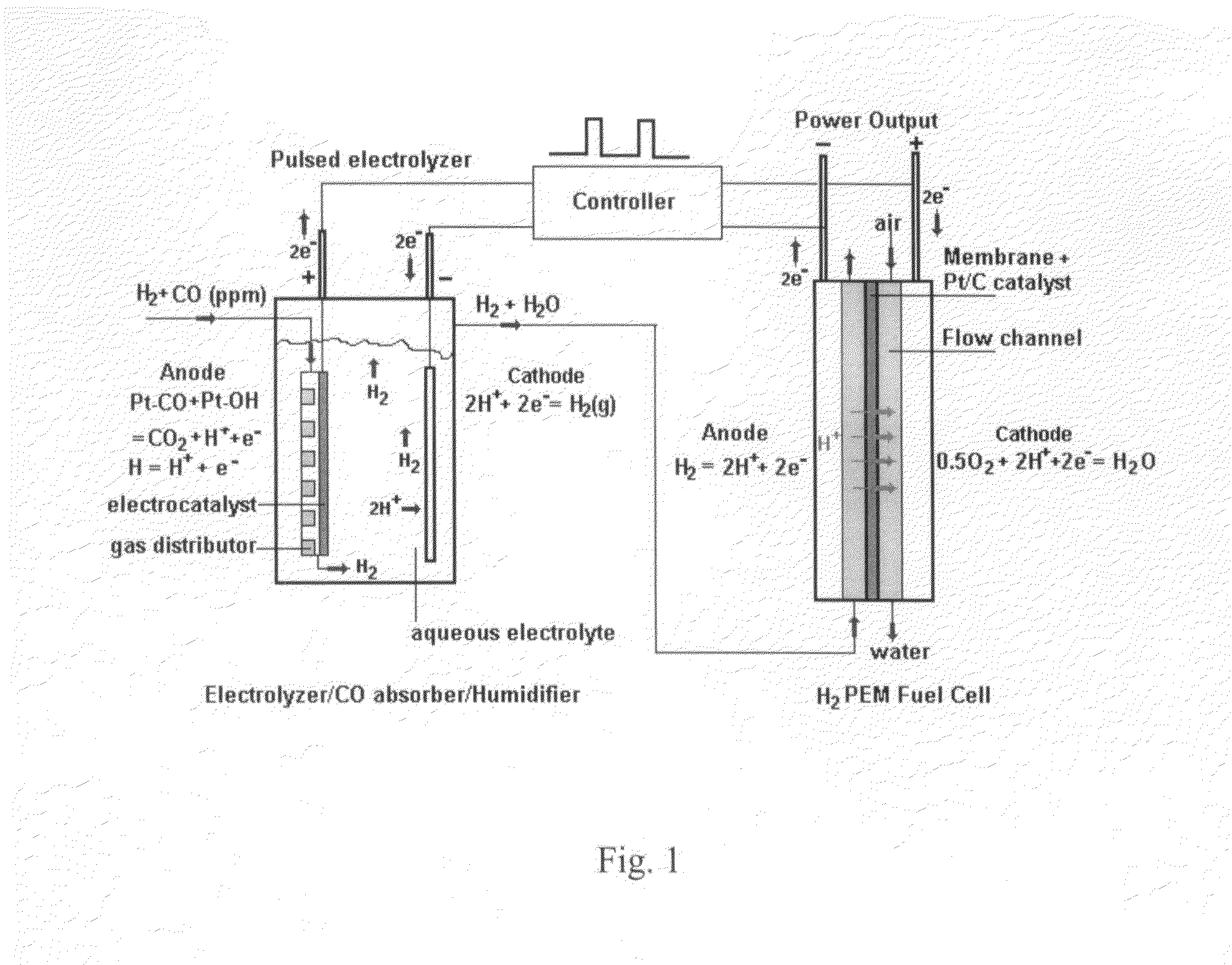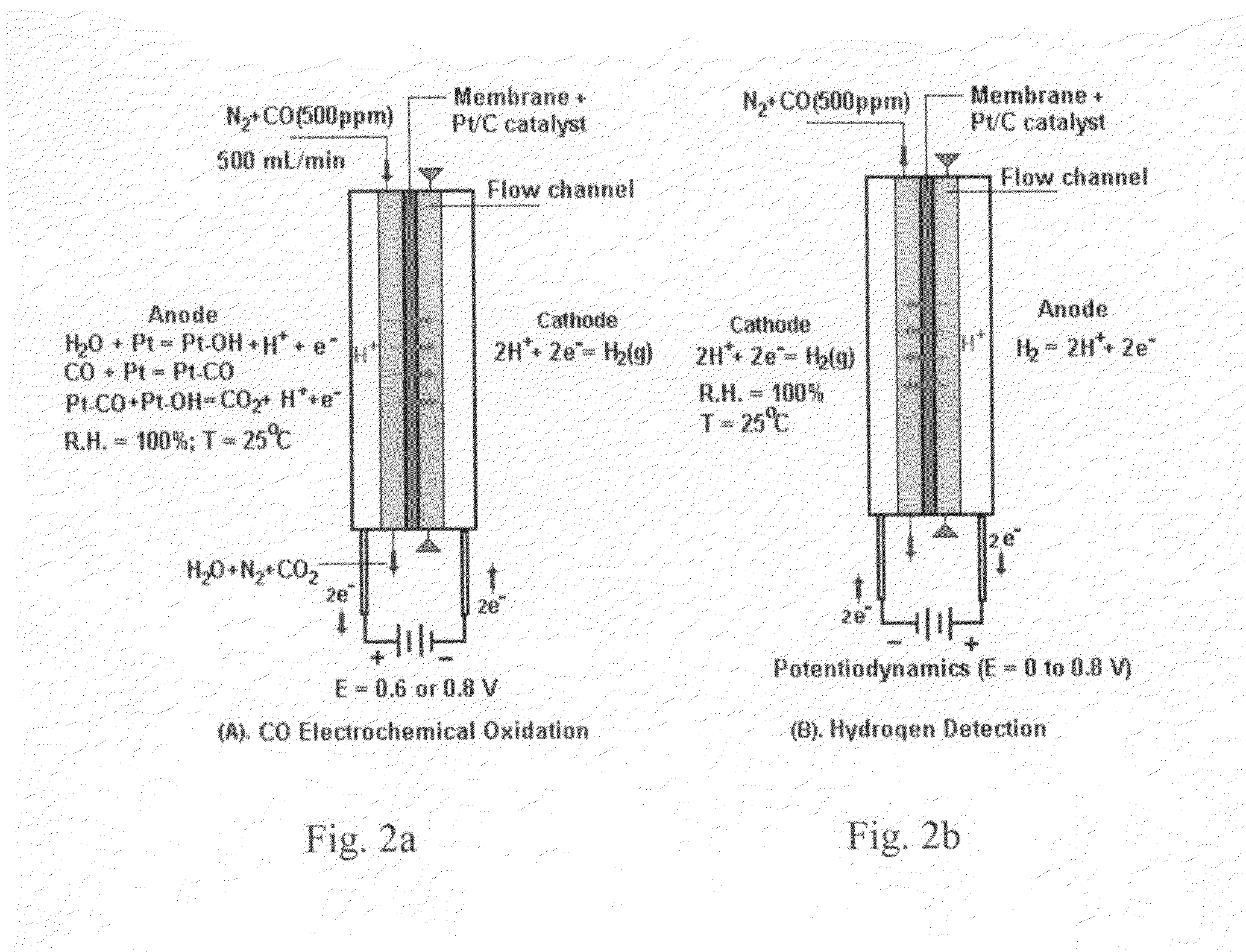Electrochemical method for the removal of PPM levels of carbon monoxide from hydrogen for a fuel cell
a fuel cell and carbon monoxide technology, applied in the direction of electrolysis components, electrochemical generators, electrolysis processes, etc., can solve the problems of current available technologies, difficult to remove low level co from hsub>2 /sub>rich stream to less than 10 ppm, and degradation of fuel cell performance and durability, etc., to achieve the effect of increasing the performance and durability of pem fuel cells
- Summary
- Abstract
- Description
- Claims
- Application Information
AI Technical Summary
Benefits of technology
Problems solved by technology
Method used
Image
Examples
Embodiment Construction
[0045]Before explaining the disclosed embodiments of the present invention in detail it is to be understood that the invention is not limited in its application to the details of the particular arrangements shown since the invention is capable of other embodiments. Also, the terminology used herein is for the purpose of description and not of limitation.
[0046]The following is a partial list of abbreviations used throughout the application:
PEM polymer electrolyte membrane
WGS water gas shift
EWGS electrochemical water gas shift
[0047]Carbon monoxide (CO) in hydrogen (H2) stream can cause severe performance degradation for an H2 polymer electrolyte membrane (PEM) fuel cell. The on-board removal of CO from a H2 stream requires a removal process temperature less than 80° C., and a fast removal reaction rate in order to minimize the reactor volume. At the present time, few technologies have been developed that meet these two requirements. The present invention describes an electrochemical w...
PUM
| Property | Measurement | Unit |
|---|---|---|
| electrical current | aaaaa | aaaaa |
| volume | aaaaa | aaaaa |
| temperature | aaaaa | aaaaa |
Abstract
Description
Claims
Application Information
 Login to View More
Login to View More - R&D
- Intellectual Property
- Life Sciences
- Materials
- Tech Scout
- Unparalleled Data Quality
- Higher Quality Content
- 60% Fewer Hallucinations
Browse by: Latest US Patents, China's latest patents, Technical Efficacy Thesaurus, Application Domain, Technology Topic, Popular Technical Reports.
© 2025 PatSnap. All rights reserved.Legal|Privacy policy|Modern Slavery Act Transparency Statement|Sitemap|About US| Contact US: help@patsnap.com



